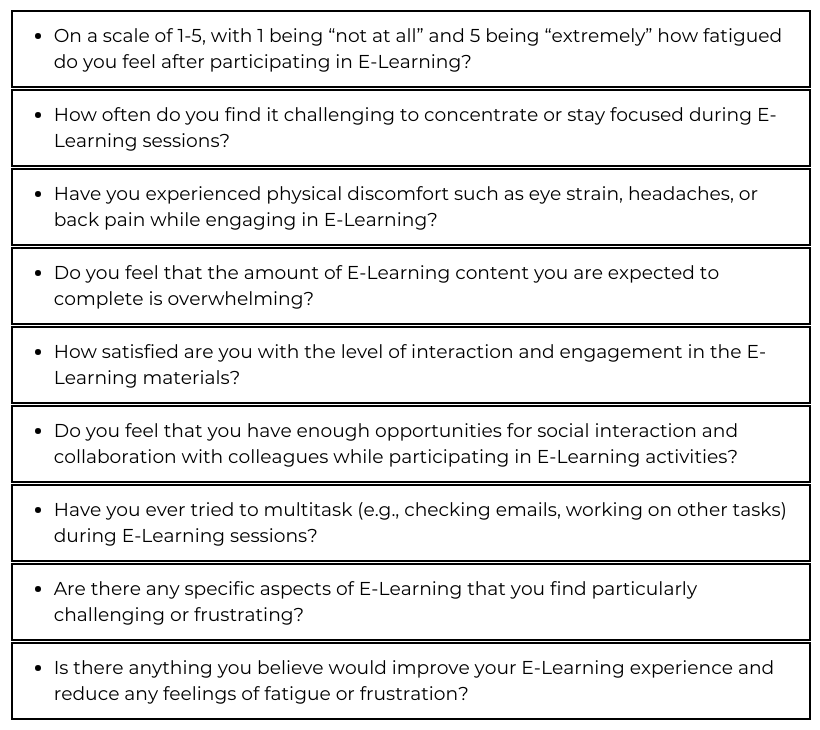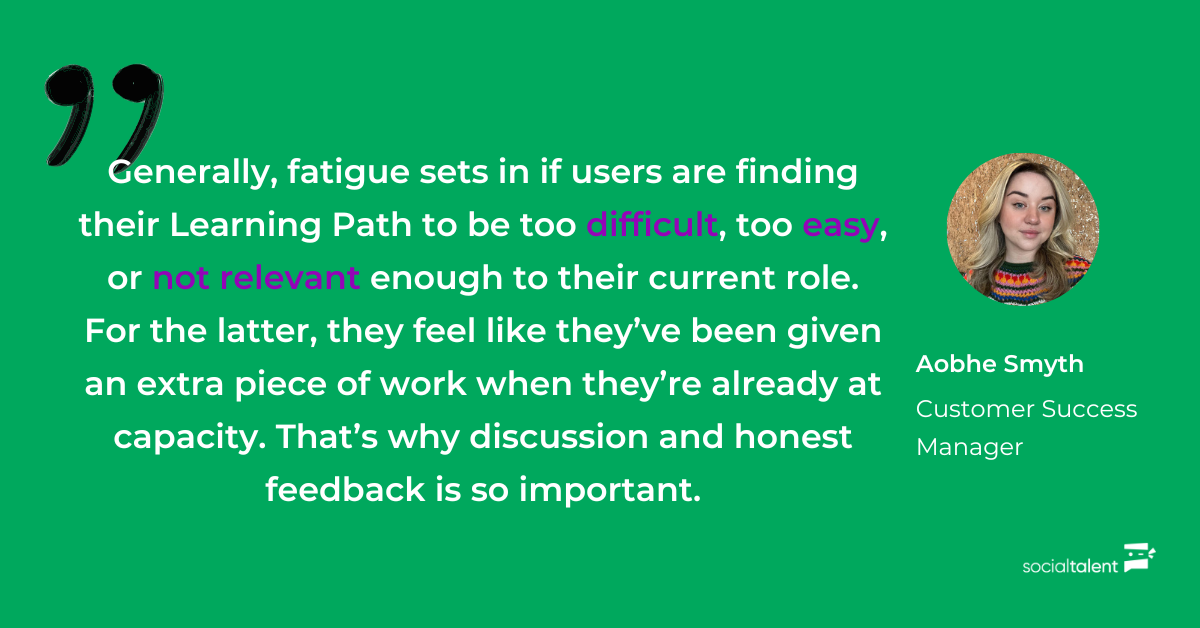The concept of learning is being radically transformed. When once degrees and third-level institutions marked the end of formal training – they now, really, represent only the beginning. Knowledge and skills are accumulating at such a fast rate that in order to remain effective, you have to continue to learn. And this is particularly true when it comes to the workplace.
Learning and development (L&D) is increasingly recognized as essential by top talent when seeking employment, but it is also sought after by organizations wishing to foster and promote upskilling and innovation. In today’s workplace, L&D plays a pivotal role, symbolizing growth, engagement, and success, manifesting in various formats, with the burgeoning favorite being E-Learning.
According to LinkedIn, over 90% of companies have a digital learning experience of some description. It’s an omnipresent offering, allowing for flexibility, up-to-date insight, and ease-of-use. E-Learning also facilitates this lifelong learning model, giving employees access to on-demand, expert training whenever and wherever they want. It fits busy lifestyles and when delivered with attention and care can be hugely transformative. But this format of learning can also be a victim of its own strengths, meaning that E-Learning fatigue is a prominent challenge.

How is E-Learning fatigue manifesting?
Defined in a recent edition of the academic journal Perspectives, E-Learning fatigue is:
“The degree to which students feel a sense of overload from immersion in a seemingly constant use of technology, creating mental and physical dynamics that result in less efficient, possibly even uncomfortable, learning.”
It’s been said that since the pandemic, we’re spending over 50% extra time on video calls. Remote and hybrid work has enabled so much positivity, but there are downsides to being so connected to technology all the time. Studies have even shown that work days have increased to 10.5 hours on average in the UK, US, and Canada. And it’s within this atmosphere that E-Learning fatigue can thrive.
We are so switched on, staring at screens for every aspect of our jobs that when we add learning into this virtual mix, it can seem like overkill. But there are other elements at play as well that can lead to this sense of fatigue:
- Pressure from leaders to constantly upskill and reskill.
- An over-focus on learning as a tick-box or compliance exercise.
- Unnecessarily long training modules and curriculums.
- Poor production, sound, and visual quality.
- An abundance of resources can be overwhelming.
Becky Chung, who is the VP of Talent Development at Cielo, told us on our podcast that “training is a moment – it is not the solution.” We have to do more than just assume that giving employees access to E-Learning is enough – it’s about applying the learning and enablement.
When E-Learning is of low quality, isn’t relevant, is poorly enabled, and is overly mandated to already burnt-out employees, fatigue with the format will naturally set in. And it can come from varying degrees – you may think your team is fine; they’re completing their learning requirements, there’s no pushback, it must be a success, right? But the truth is, E-Learning fatigue can be endemic without you even realising.
Diagnosing E-Learning fatigue
For L&D to make the biggest impact, you want it to be sticky, and engaging, and actionable – ROI comes from how your teams respond and use their learning to grow and develop. As the Computers and Education Open journal argues:
“From an online learning perspective, student engagement is recognised as crucial to learning and satisfaction in online courses.”
But how do you understand this baseline? The first step is to survey your teams. Do it anonymously, be thorough, and collect the relevant data to assess your current approach to E-Learning. Below is a quick template to give you an idea of what questions to ask:

From here, you can dig into the results to gain a clearer picture of how E-Learning rates within your teams and better understand how you can create a program that suits their needs. For SocialTalent’s Customer Success Manager, Aobhe Smyth, the problem usually lies in three areas:

Combatting E-Learning fatigue
Technology-based training is undoubtedly the future (and present!). But for E-Learning to be at its most effective, it must have a clear purpose and be more than just a relentless barrage of content – otherwise learner fatigue will set in fairly quickly.
So how do we tackle this?
1. Understanding the ‘why’
Relevancy is crucial for learning to stick and not feel like a chore. There is little else more frustrating than sitting at your computer to complete a training course that does not impact your role – especially if you haven’t chosen it! So make sure your learners understand WHY content has been specifically selected for them. Perhaps it’s to upskill in a particular area of importance for the organization, or that it will stand to them in terms of development or career progression. If value can be ascertained, it’s much easier for engagement to flourish. According to LinkedIn, 56% of employees say they would spend more time learning if a manager suggested a course to improve skills.
2. Be concise
We are huge advocates of microlearning at SocialTalent because we know this model best suits learning in the workplace. One of our customers, HudsonRPO, commits to a 30 minute block of learning for their employees each week – and managers actively encourage this to ensure accountability. While another SocialTalent customer prefers to find 6 minute windows every day to complete some learning items. These processes are considerably more achievable than finding huge chunks in an already busy diary. And with brevity in mind, remember to ensure content is concise; this allows learners to get worth while also allowing for natural breaks, aiding concentration, and avoiding any feelings of overwhelm.
Learn more: See how HudsonRPO uses SocialTalent to build a learning culture.
3. Get off the hamster wheel
Repetition can easily lead to E-Learning fatigue. If all users are doing is clicking on videos and watching in isolation with no engagement, it’s a recipe for diminished returns. Bring learning into your 1-to-1s, set up checkpoints to deep dive into progress, schedule some social learning opportunities where people can share and discuss. Not only does it break the monotony, it gives learners a chance to think about the practical application of the training.
Learn more: 6 Ways to Build a Culture of Learning.
4. Look at the mechanics
Is your user interface easy to find? Is logging in a smooth process? What about the set-up, is it pleasing to the eye and simple to navigate? Can help be found when it’s needed? It’s important to remember that content isn’t the only part of E-Learning that warrants thought when it comes to optimizing the experience. If learners don’t feel comfortable or have to trawl through a clunky dashboard, it will only add to their frustration.
5. Build learning into a work schedule
Barriers need to be removed if you want to ensure E-Learning hits the right mark – and asking people to train outside of a work-week can do just this. By mandating time during the 9-5 you let your team know how important L&D is and that you’re willing to invest in their development. You take away stress, you take away worry, and you enable them to focus on learning without it seeming like another task on a to-do list.
6. Don’t forget about fun
A lot of what’s advocated for with E-Learning fatigue revolves around optimising the process and ensuring relevance – which has to be implemented – but don’t lose sight of the enjoyment factor. Learning should bring fulfillment, and if your users are running out of steam, it’s important to reframe the exercise. Perhaps after completing mandated learning, the user can select their own Learning Path next? Or build in some rewards and incentives to motivate your team and bring some lightheartedness to proceedings. Nokia even uses SocialTalent training in a ‘Who Wants to Be a Millionaire‘ style game with swag for prizes to build more learner engagement!
Learn more: See how Nokia turns eLearning into an event!
Conclusion
It’s not hard to see how E-Learning fatigue can become an issue. We spend so much of our time in front of screens and are busier in the workplace than ever before, it’s no surprise that poorly implemented training can cause users to shut down. But it’s also very preventable. Communicate with your team, ensure learning content is relevant and accessible, bring lessons out from behind closed doors, and keep things light – this is the perfect prescription to combat eLearning fatigue!
With an industry beating NPS of 90 and a course completion rate of 85%, the SocialTalent learning platform is designed to keep learners engaged. Talk to us today to find out more.
The post The E-Learning Paradox: Maximizing Benefits While Minimizing Fatigue appeared first on SocialTalent.
